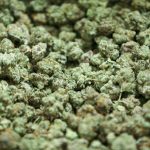Soldering is really a complicated process Body that needs various intricate factors and procedures to operate together seamlessly to be able to create the preferred output. Solder alloy is heated to produce a conductive, reliable and powerful joint between two metal surfaces. This joint really is really a metallurgical bond that should be resilient and electrically conductive. Caffeine reaction responsible in order to obtain this bond depends upon various factors, the most crucial of these being excellence of the metal surfaces being became a member of. They must be free from dust, grime and oxidation – essentially any contaminant that may hinder caffeine connecting process or compromise the force and longevity of the solder joint. Making certain the metal surfaces remain clean for soldering is down to soldering flux paste. In the following paragraphs, we’ll explore the different sorts of soldering flux available in the realm of electronics manufacturing and discover their appropriateness for various applications.
Rosin Flux
Among the earliest solder flux paste varieties relies off pine sap that’s refined and purified to create rosin. This flux variety flows easily when heated but could acquire a solid and inert condition when it’s cooled lower. It may, therefore, easily be utilized in PCBs in which the circuit board won’t exceed a specific temperature in which the rosin flux may become active again and harm the bond. Rosin flux residue can be simply removed with alcohol. This flux type could be further subdivided into three primary groups:
• Rosin (R) flux: It has only rosin since it’s primary component and it is minimal active of. It does not leave any residue behind which eliminates the requirement for yet another cleaning step throughout the soldering process.
• Rosin Mildly Activated (RMA) flux: This variety contains activators to wash even solder coated surfaces and component leads, allowing molten solder to wet these and join them together.
• Rosin Activated (RA) flux: This is actually the most active number of all rosin-based solder flux pastes and can leave probably the most residue behind too. It requires yet another cleaning key to ensure longevity of the solder bond.
Organic acidity flux
This is actually the most generally used solder flux paste varieties in the market. It consists of organic water soluble acids like citric, lactic, and stearic acidity coupled with solvents like isopropyl alcohol and water and it is broadly regarded as much more powerful than its rosin based counterparts. It is known to clean oxides off a lot more rapidly and it has a great wetting action. However, cleaning this flux from the board is essential since it is electrically conductive and can harm the circuits when the PCB is defined into operation. The flux residue however, can be simply cleaned served by water.
Inorganic acidity flux
This method is more powerful than organic acidity flux and uses more powerful acids like muriatic acidity, zinc chloride, and ammonium chloride. Its me is more targeted towards metals like copper, stainless and brass, but it must be carefully cleaned off rapidly prior to the surfaces may be used since the flux residue can finish up being seriously corrosive. Therefore, a warm water or solvent rinse is suggested to safeguard your board.









